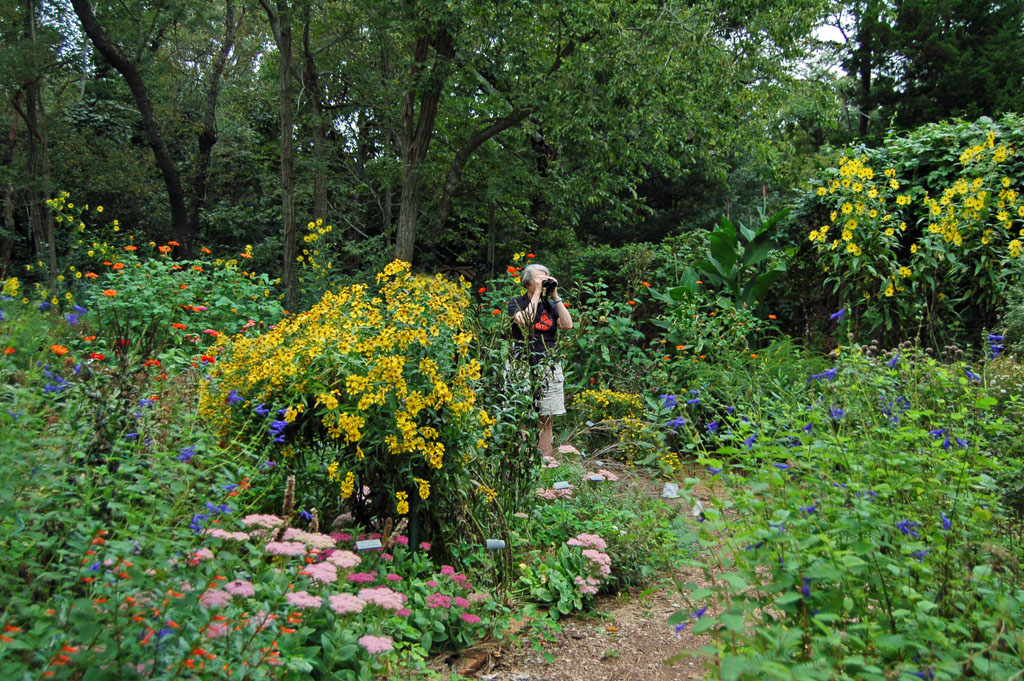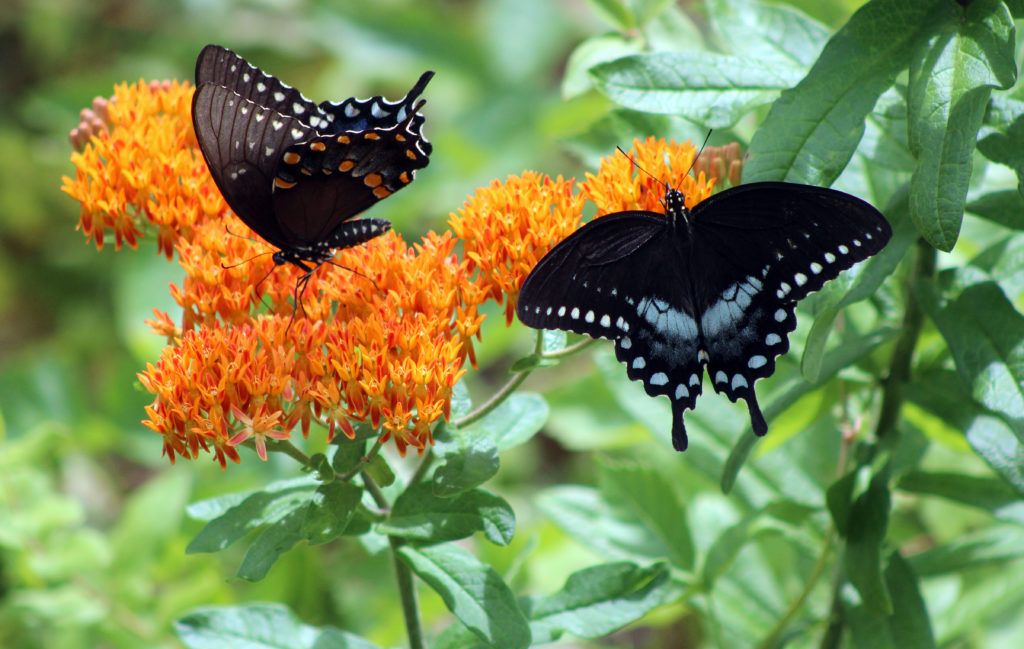
GOSHEN – It may seem like the world has been turned upside down. OK, it has.
In the course of weeks, the once impossible has become commonplace, as the unprecedented efforts to curtail the spread of COVID-19 have become part of daily life.
But the world still turns and spring is underway. Bulbs are up and blooming. For Pat Sutton, who has worked for decades to encourage a natural approach to gardening, this is a perfect moment to spend time in the garden, allowing her to be outside while maintaining that all-important social distance.
“Those of us with wildlife gardens are perfectly content right now to walk out the door and be in our gardens,” she said. “They sustain us. They give us joy. They entertain us. They are full of so much life!”
According to Sutton, most lawns and gardens in the region offer little to wildlife. Her life’s work has been to encourage people to plant native species, and she believes now is a great time to start.
The first step could be an inventory of the plants already growing nearby. She suggested taking an inventory of everything growing in the yard, including weeds. Especially the plants people think of as weeds.
For instance, purple dead-nettle, sometimes known as red dead-nettle, is a tiny, wild-growing plant that is among the first to bloom in the spring, showing delicate purple flowers. Sutton used to pull it from her garden – it’s not a native species, originating in Europe and Asia; she now leaves it as it sprouts. Along with dandelion, another species introduced to the Americas, it provides some much-needed color and pollen for the early insects that depend on it.
For Sutton, gardening is about the aesthetics, but it’s also about the wildlife that depend on local plants.
Many species of butterfly will only lay eggs on specific plants, most famously the monarch. The black and orange butterflies are very visible locally as they swarm along the Jersey Cape in late summer and early fall, preparing for their long migration to Mexico. As caterpillars, the insects eat only milkweed, and that is the only kind of plant on which the females will lay their eggs.

There are multiple other examples of local and migrating birds and butterflies that depend on indigenous plants, both for food and as a home to the next generation. Many songbirds will eat seeds and other food, but depend on caterpillars to feed their young, Sutton said.
Most who do survey the plants near their homes will find the majority of the plants are not native, from the grass on the lawn to the flowers in the garden and the trees in the yard. It may include English ivy, Norway maple and ornamental pear trees.
They may look lovely in the garden but do nothing for most wildlife.
“To our butterflies and moths, they may as well be plastic,” Sutton said. With non-native species in place in yards throughout the county and around the country, it’s getting tougher for wildlife to find habitat. Sutton believes this can change, if enough people get inspired to plant native species.
“I think people like birds. I think they like butterflies,” she said.
Her mission to support planting local species began when she started working as a naturalist at the Cape May Point State Park in the 1970s. The park is one of the best places in the region, and perhaps in the nation, to see migrating birds. She described her time there as a great experience.
“I was inspired by it. I felt I was really at the epicenter of the migration, watching the interaction between native plants and migrating birds,” she said. Later, working with the Cape May Bird Observatory, she continued to offer workshops in native plants.
Since she retired in 2007, Sutton has continued her mission, presenting at conferences and teaching at library branches, at least before the current crisis brought an end to public gatherings. She also uses her website, patsuttonwildlifegarden.com, to continue to reach people with her message of gardening for wildlife.
Local plant sales have increased over the years, and the library workshops have drawn crowds.
“The neat thing about those programs is I’m reaching people I hadn’t reached before,” she said. “So there’s keen interest.
Native plants are also more resistant to native pests and to the local climate, which means less need for watering or the use of artificial fertilizers or pesticides.
For now, it may be difficult to acquire native plants until current restrictions are lifted. But there are websites that offer native plant seeds and seedlings for mail order. For families with restless kids at home, a sunny afternoon in the garden may be both educational and a needed break from new updates. With an eye for detail, children can be great help in the initial survey.
“Imagine the kids right now that are being home schooled. They may notice a little weedy thing coming up in your yard and be able to put a name to it. They might see some of the first butterflies of the year nectaring on this,” she said.
According to Sutton, potential gardeners do not need a lot of space. She cited a friend who has a five-foot-by-10-foot space at a townhouse planned for a natural garden.
“That’s all she has to garden with, but she is going to make that count,” Sutton said.
To contact Bill Barlow, email bbarlow@cmcherald.com.
This story was produced in collaboration with CivicStory and the New Jersey Sustainability Reporting Hub project. It was originally reported by Bill Barlow for the Cape May County Herald, and may be re-distributed through the Creative Commons License, with attribution.
